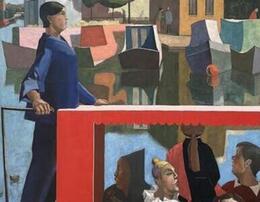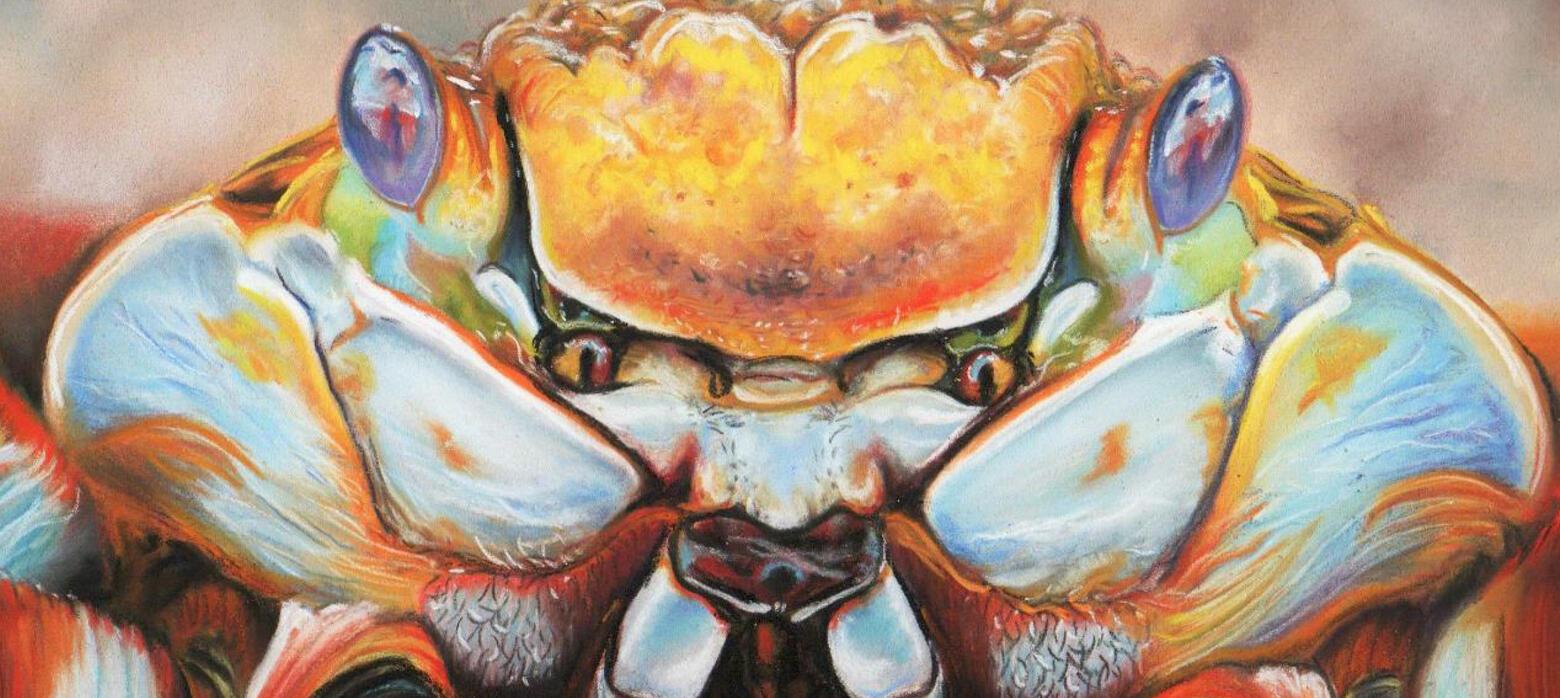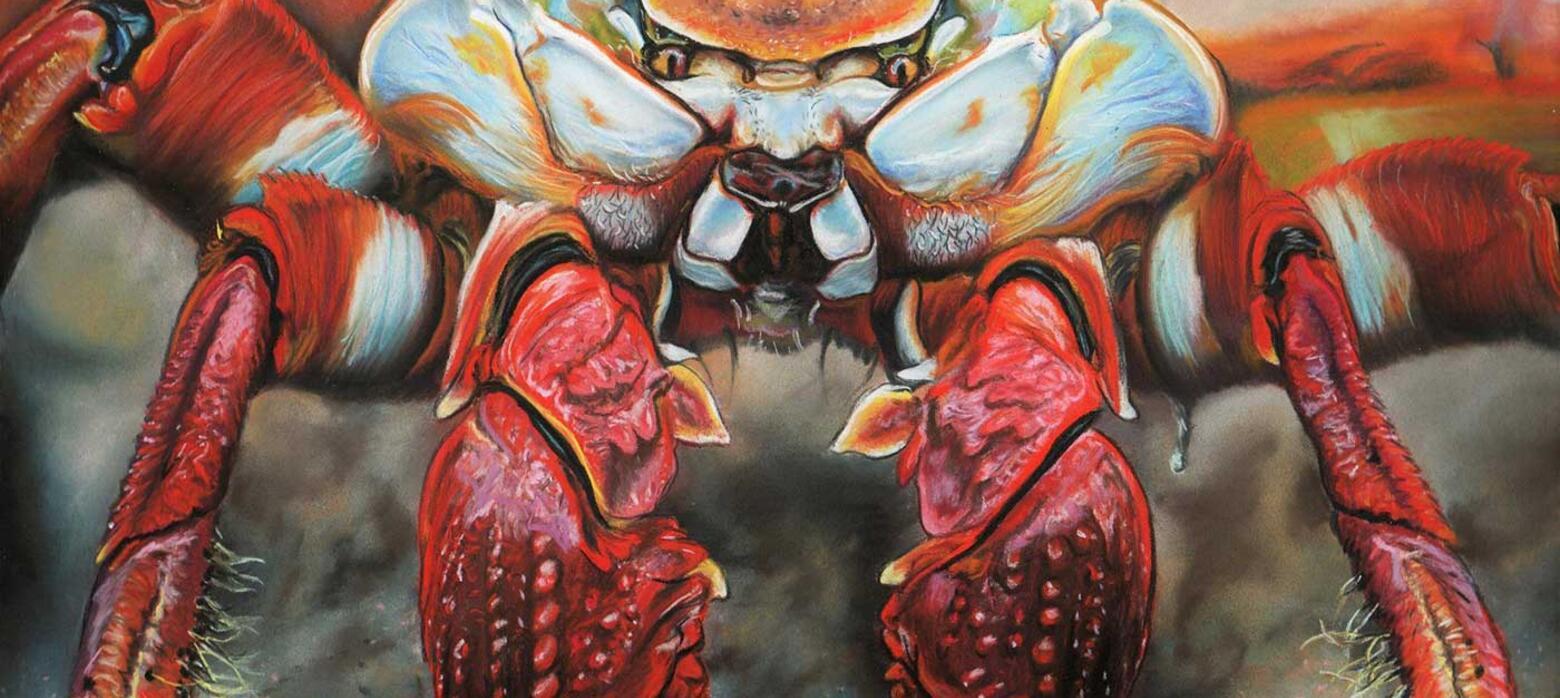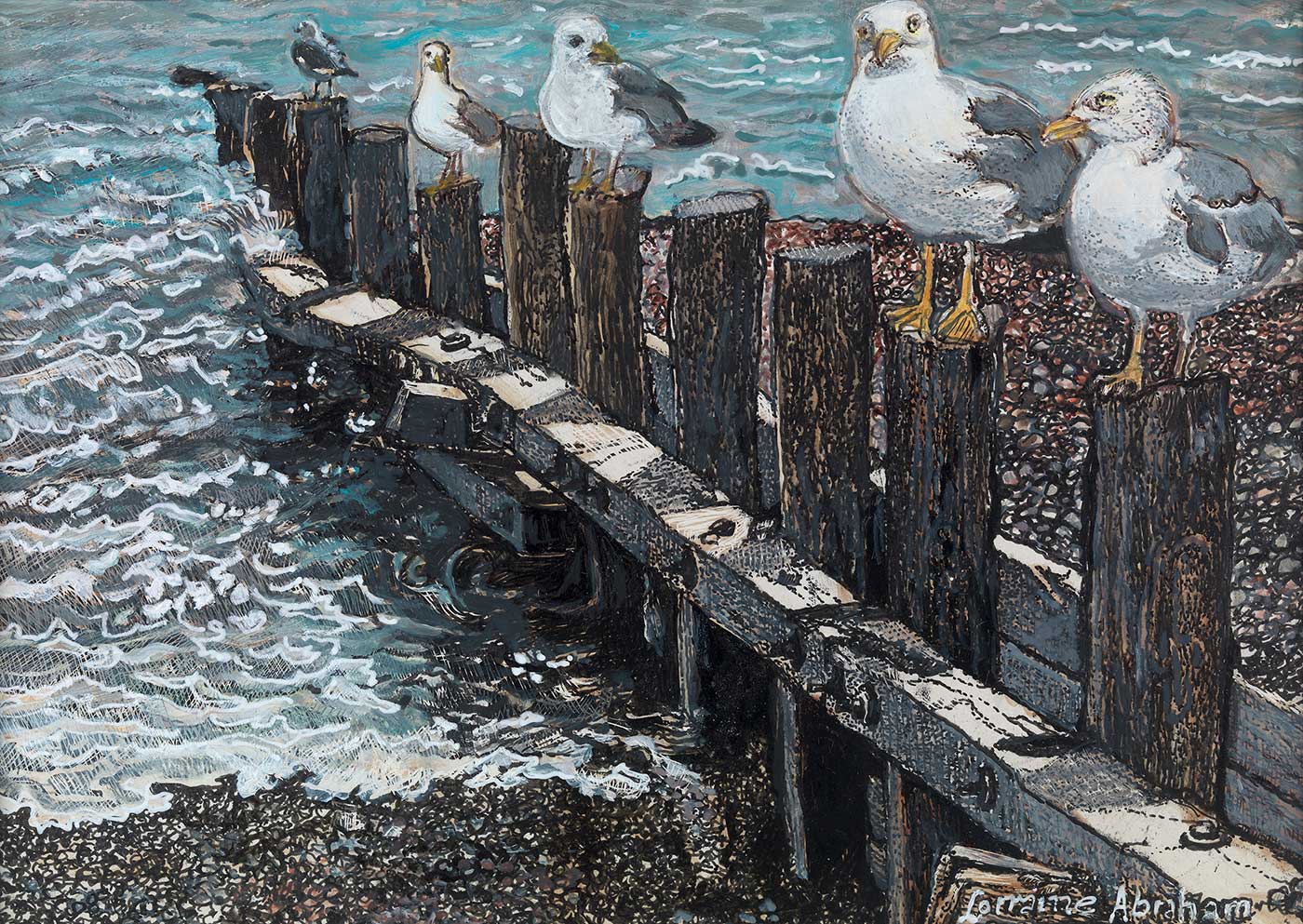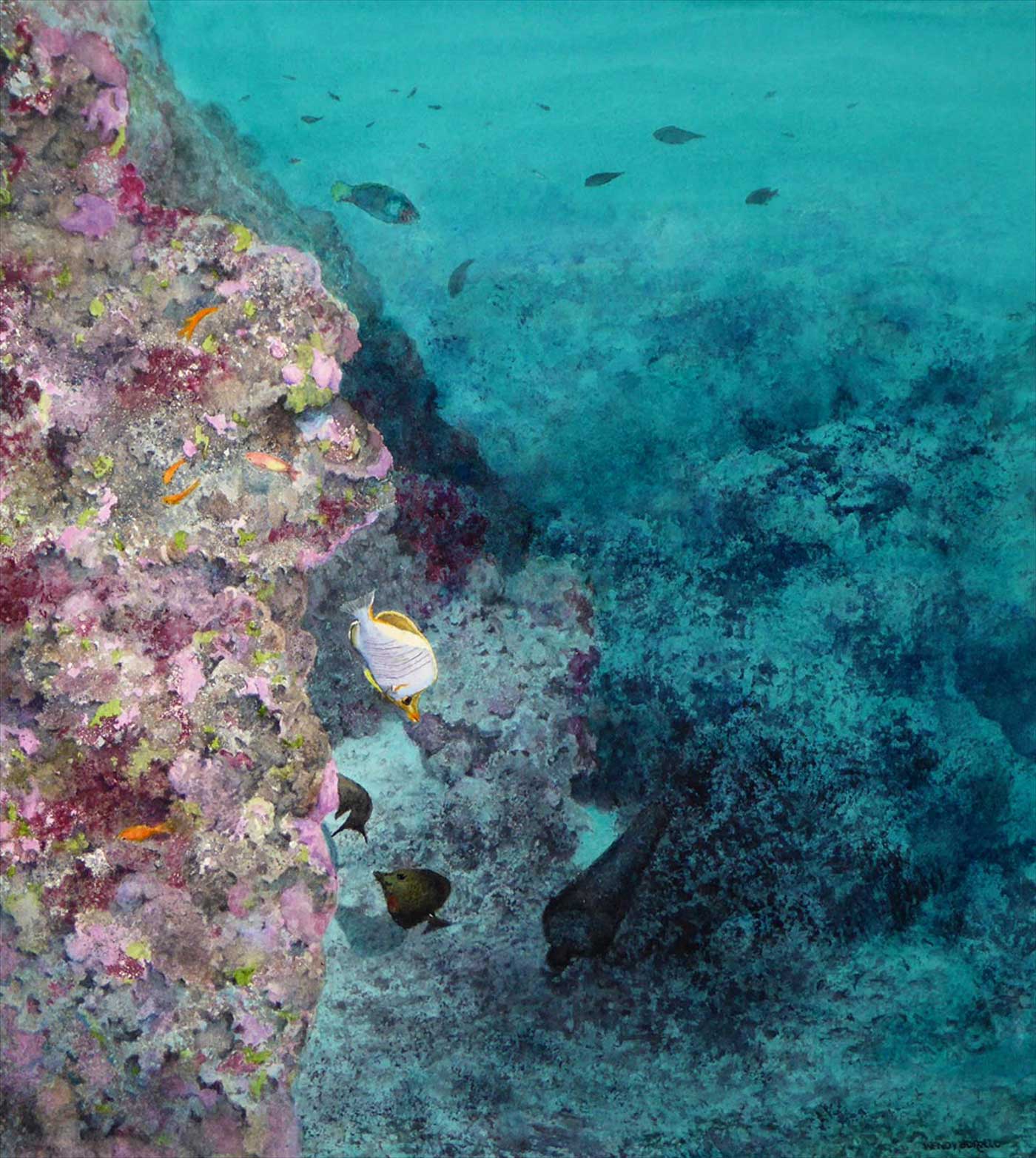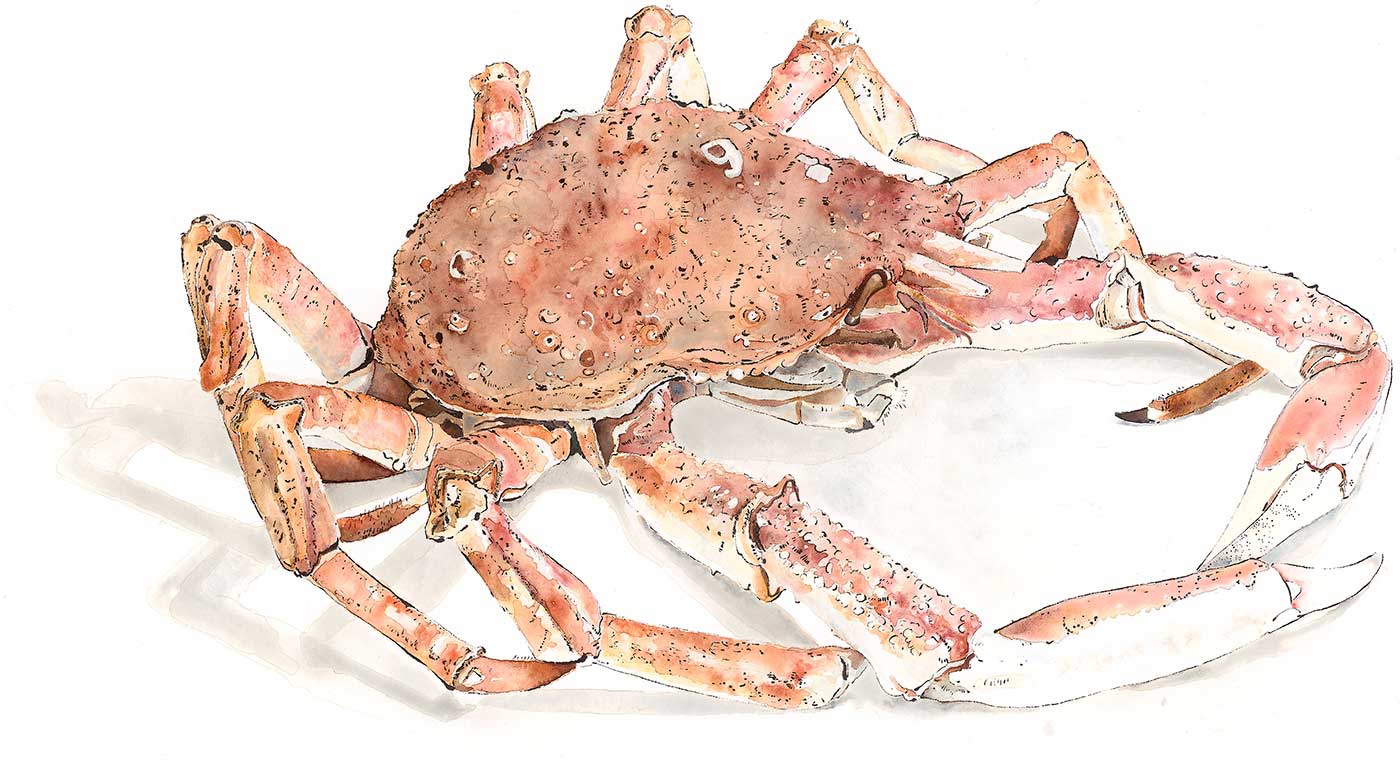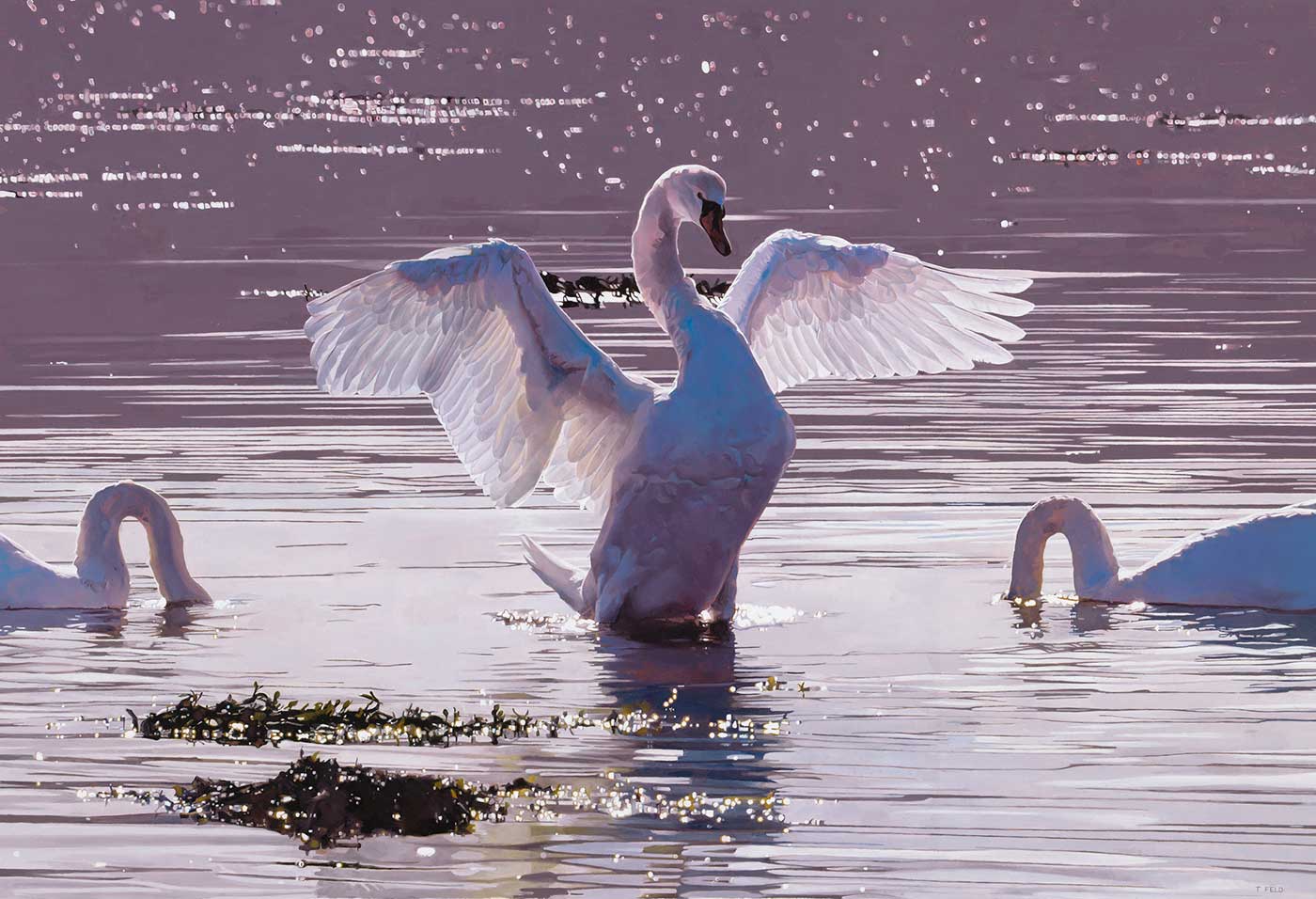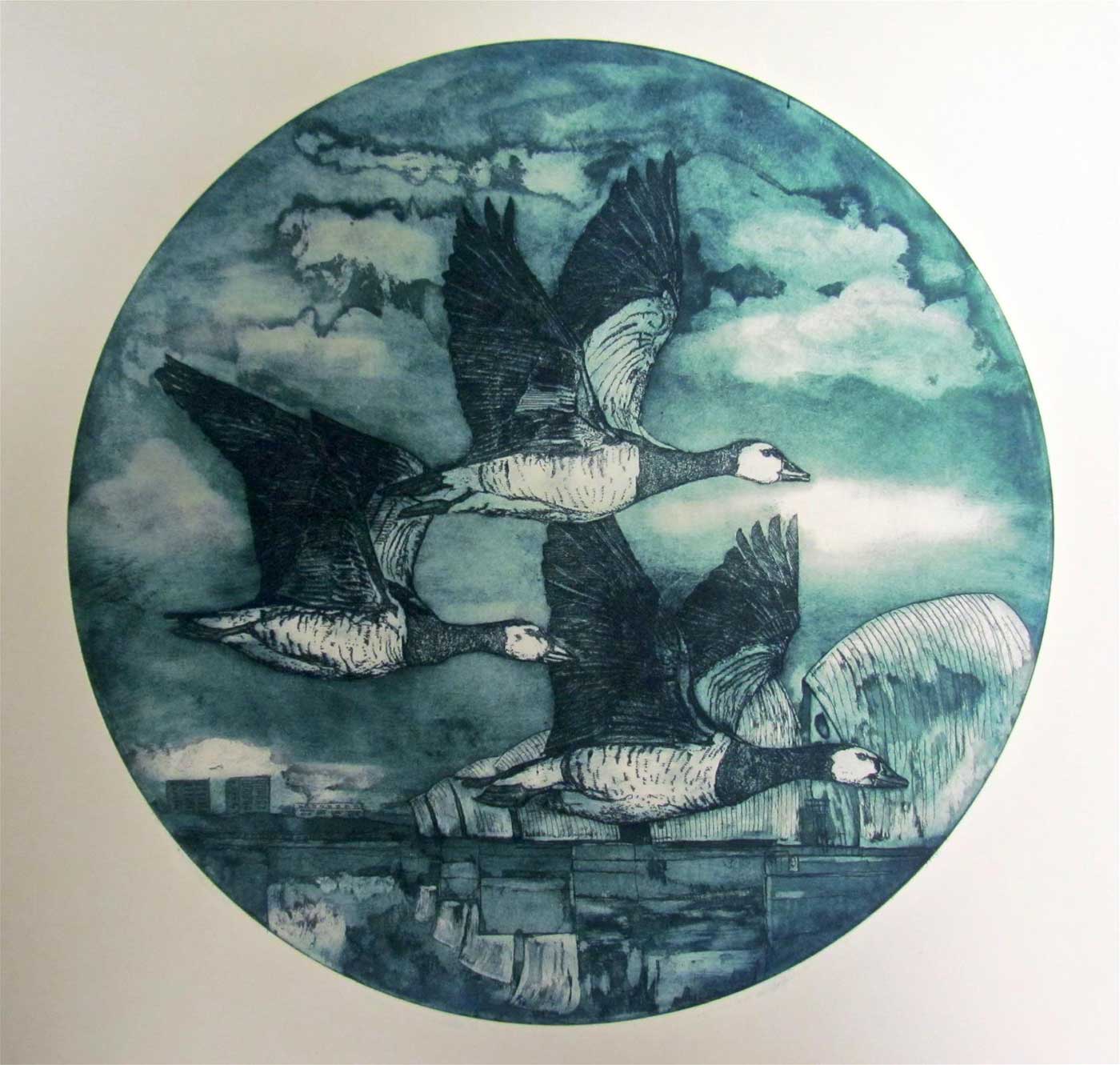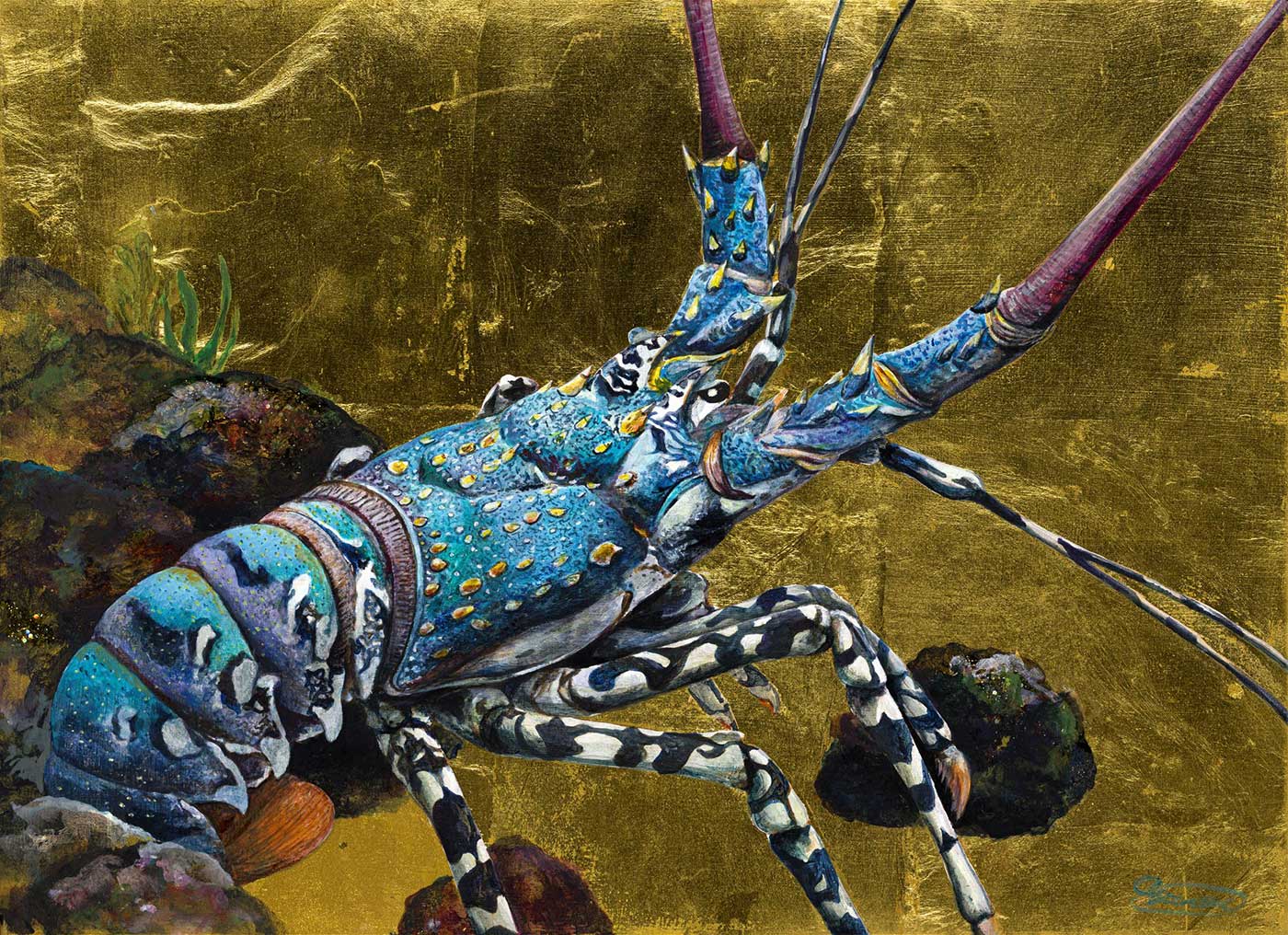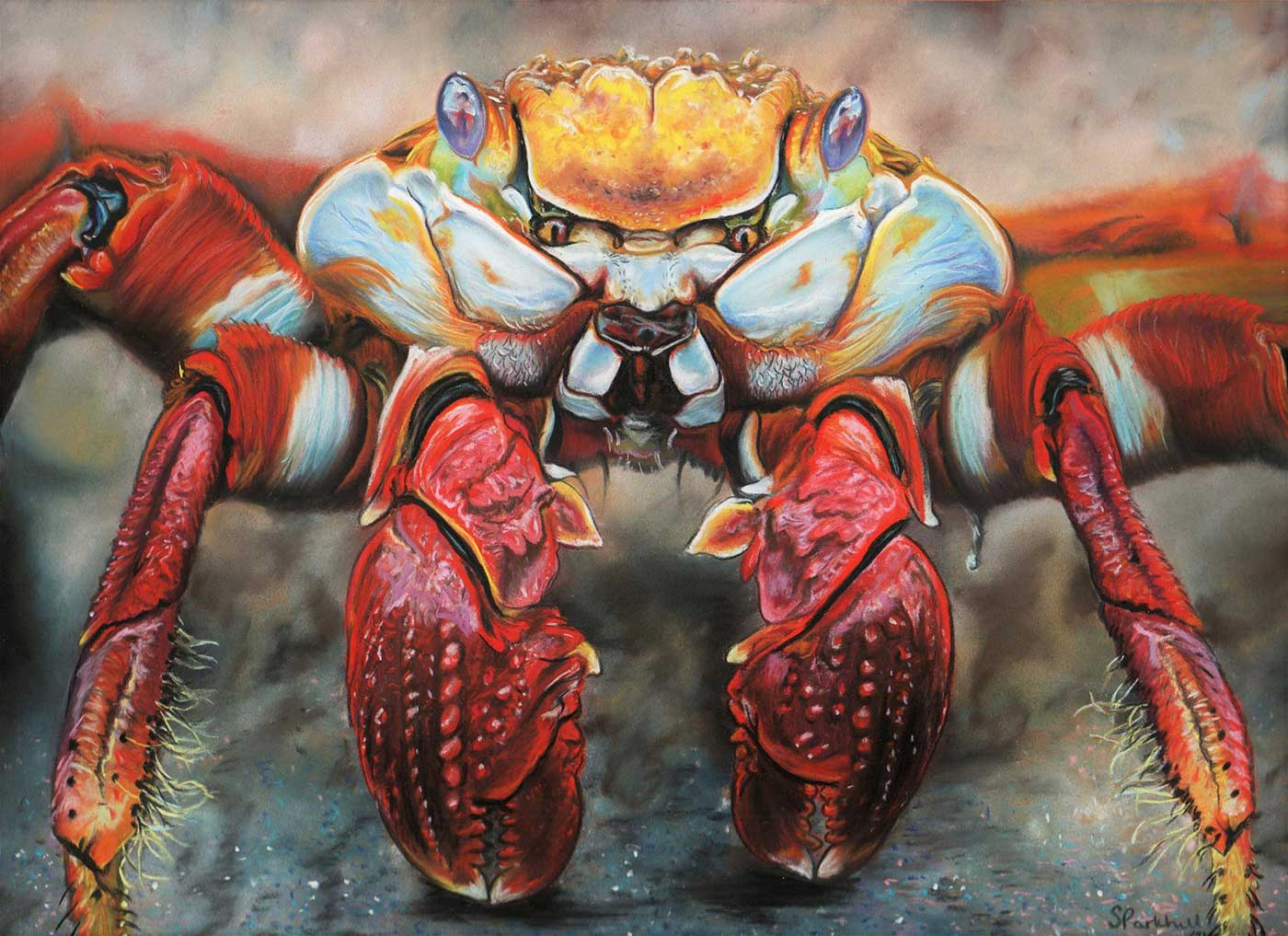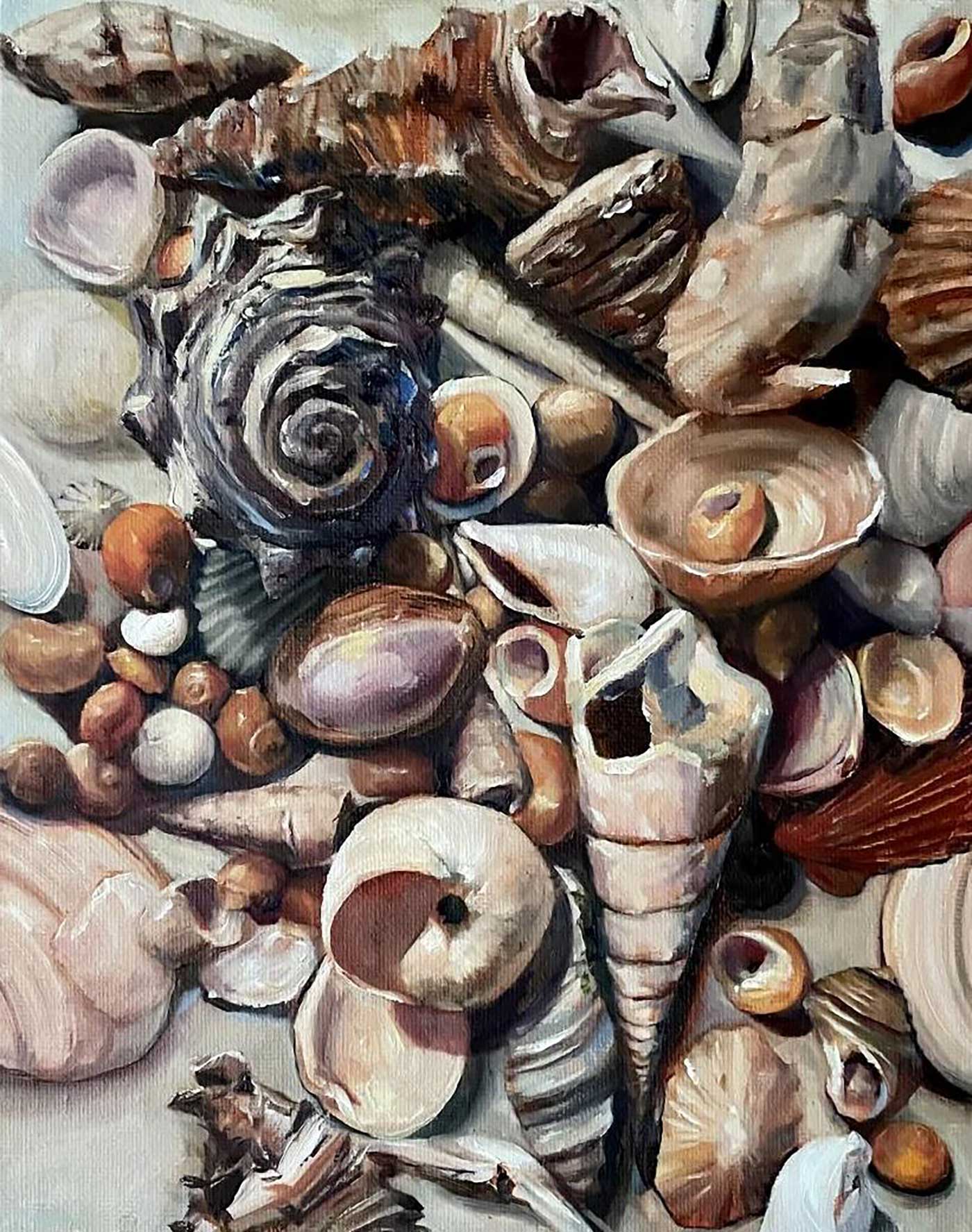Drawings and Paintings of Marine Animals
/ Royal Society of Marine Artists
We have already put together a blog post about the sculptures of the marine animals that feature within this year’s annual Royal Society of Marine Artists exhibition, which you can read about here but there is also a large array of paintings and drawings that celebrate diverse marine animals such as fish, shellfish and seabirds.
When they aren’t screeching at us or trying to steal our food, Lorraine Abraham’s piece A Suitable Place for a Respite shows a cuter side to seagulls. She has captured a line of seagulls perched along wooden stumps, each with different facial expressions giving them their own personalities and sense of character. Lorraine’s use of mixed media to create detailed textures on the pebbles, seafoam and wood really brings the piece to life.
Lorraine Abraham RSMA A Suitable Place for a Respite Mixed media 21 x 36 cm £350
Wendy Borello’s watercolour painting Yellowhead Butterflyfish, Bassas Da India is inspired by one of her diving trips where she encountered remote and largely uninhabited areas of the Indian Ocean. Wendy is an advanced scuba diver and is regularly motivated by undersea discoveries and the wealth and diversity of sea life. She has been fascinated with the sea since early childhood and aims to turn her experiences into evocative forms. Wendy works in transparent watercolour using light-fast pigments and a limited colour palette.
Wendy Borello RSMA Yellowhead Butterflyfish, Bassas da India Watercolour 55 x 49 cm £785
Next, we look to Lucy Clayton’s watercolour and ink piece Spider Crab No.9 Lucy explains: ‘I was inspired by my love of rock pooling and searching for crabs. This piece was created by printing with drawing ink and painting with loose washes of watercolour to represent the delicate tones and textures of the crab's shell.’ Spider crabs are given their name due to their shape and disproportionately long legs.
Lucy Clayton Spidercrab No.9 Watercolour & ink 44 x 66 cm £1,700
Swans at Ardoch is a photorealistic oil painting by Anthony Feld. In the centre of the painting is a Mute Swan lifting its neck and spreading its wings as it asserts dominance. Two other swans are depicted feeding, their heads in the water, whilst the sun glistens on the surface. Anthony painted this from what he observed at the River Clyde at Ardoch near Dumbarton.
Anthony Feld Swans at Ardoch Oil 55 x 75 cm £3,250
Timothy Mitchell’s print Barnacle Geese, Winter Solstice, Thames Barrier, London is an aquatint etching with spit-bite; to draw your image you paint diluted acid mixed with spit (or gum arabic) on a plate. The acid bites wherever it touches the plate showing brushstrokes, drips and dots resembling watercolour in the finished print. Timothy explains: ‘In the weeks leading up to the New Year during last year's lockdown, on my walk to the studio along the River Thames from Greenwich to Woolwich, I quite often saw these Barnacle geese flying fast and low up the river Thames. They migrate here from Greenland and Svalbard, Norway each winter.’
It was once thought that Barnacle Geese hatched out of goose barnacles attached to ships at sea. This belief grew because goose barnacles have black and white stripes (like the geese), and the nests of barnacle geese were never seen as they lay their nests high up on mountain cliffs. As a result, people even considered the barnacle goose acceptable to eat on Fridays and during Lent, despite the Church's ban on eating meat at these times, because it was not 'born of the flesh'. The barnacle myth can be dated back to at least the 12th century.
Timothy Mitchell Barnacle Geese, Winter Solstice, Thames Barrier, London Aquatint etching with spit-bite, edition of 60, 50 x 50 cm 340 (48 x 48 cm £290 Unframed)
Spiny Lobster is an acrylic painting on a gold leaf background by Ayano Omura. Ayano explains: ‘This is a lobster that lives in the tropical ocean. It has a blue-green carapace, yellow spines, pink beard, orange tail, and dark blue and white legs. This species, which is like a jewel of the ocean, is called "ornate spiny lobster".’ The use of gold leaf complements the shiny jewel tones on the body of the lobster.
Ayano Omura Spiny Lobster Gold leaf & acrylic 30 x 40 cm £1,500
Crabtivated by Sophie Parkhill is a close-up pastel painting of a Sally Lightfoot Crab also known as the Red Rock Crab. Sophie explains: ‘With striking details and textures along with many vibrant colours involved, soft pastels were a definite "go to" medium for this piece. A wide variety of high-quality soft pastels were used, ranging from the softest pan pastels for a blurred out, distant background, to pastel pencils and sticks edging closer to the chelae foreground (claws), creating a realistic depth for the finished piece. The overall image is captivating, whilst the glistening of the eyes also leaves a strong vibe that the subject is equally captivated by its audience. For this reason, ‘Crabtivated’ was the immediate chosen title for this piece.’
Sophie worked from a photograph by photographer Steve Allan of Wildlife Reference Photos for Artists.
Sophie Parkhill Crabtivated Soft pastel 38 x 46 cm £695
Don’t You Step On My Blue Suede Shoes! Blue-footed Booby by Pamela Preller is a drawing made in colour pencil crayons of a Blue-footed Booby. Their name comes from the Spanish word 'bobo' meaning foolish, or clown - referring to their clumsy movement on land but despite this they are extremely agile in the air. The most distinctive characteristic is their large bright blue feet. Females are thought to select males with brighter feet, as they are an indicator of his overall condition and thus the quality of his genes. Once a match is made, the pair will often remain together for life. Boobies lack a brood patch, instead using their large feet to keep the eggs warm. They are curious by nature and will stand still and stare at you.
Pamela explains ‘I chose to draw the Blue-footed Booby on a clean background with no extraneous details, just giving an indication of what it is standing on to focus the eye on the bird and its magnificent bright blue feet. Working in colour pencils is an exciting medium, in that, unlike paint, you cannot mix colours; instead colours have to be juxtaposed and carefully layered to create the illusion of the desired colour.’
Pamela Preller Don't You Step on my Blue Suede Shoes! Blue-footed Booby Crayon 43 x 32 cm £795
Lastly, we look at Felicity Starr’s oil painting 64 Shells, which captures the intricate details within a large collection of shells. A seashell is the exoskeleton of invertebrate animals and shells found on beaches are usually the shells of marine molluscs, as well as barnacle shells, shells of horseshoe crab and brachiopods.
Felicity explains: ‘I'm developing a slight obsession with painting shells! They are so beautiful and rich in colour and texture. These 64 shells are painted from life in my studio. The majority of the shells are from my childhood, when I used to collect them. My Gran gave me a few extra shells to paint from the Devon coast, from a recent trip down to Ilfracombe.’
Felicity Starr 64 Shells Oil 30 x 25 cm £1,500
Article written by Hannah Martin
The Royal Society of Marine Artists Annual Exhibition is available to Browse & Buy online now, and in the gallery from 30 September to 10 October
Discover the Royal Society of Marine Artists Annual Exhibition now
